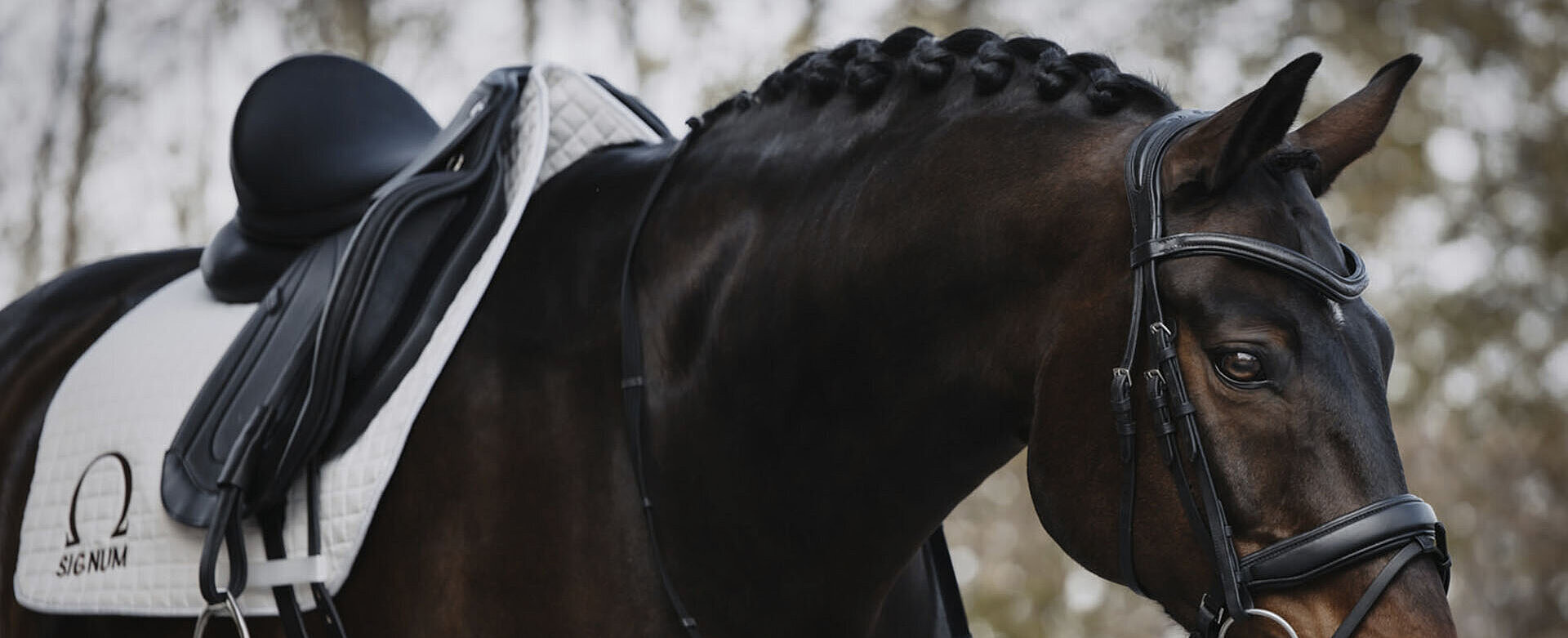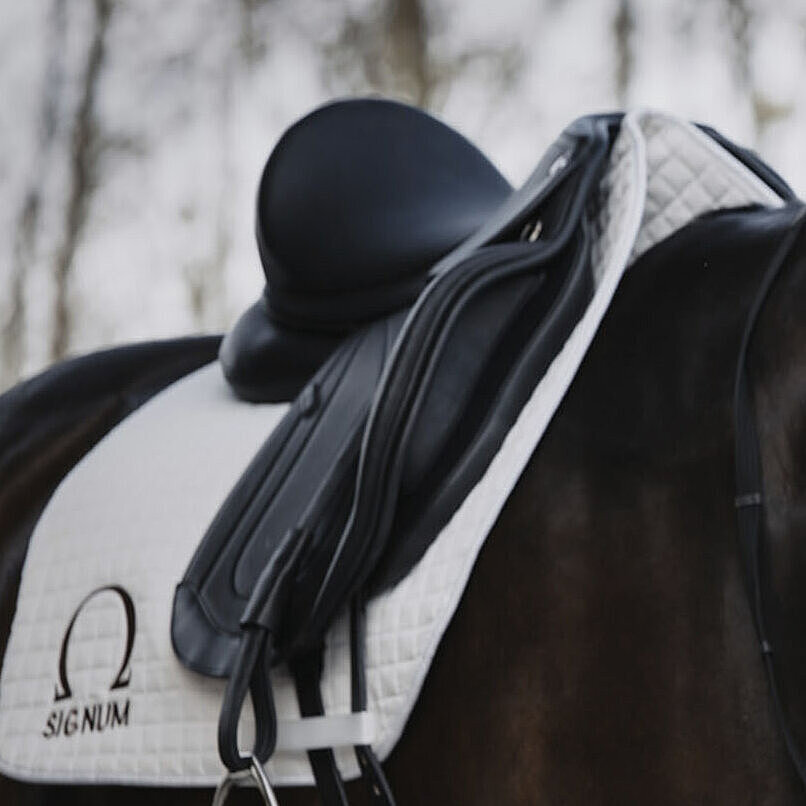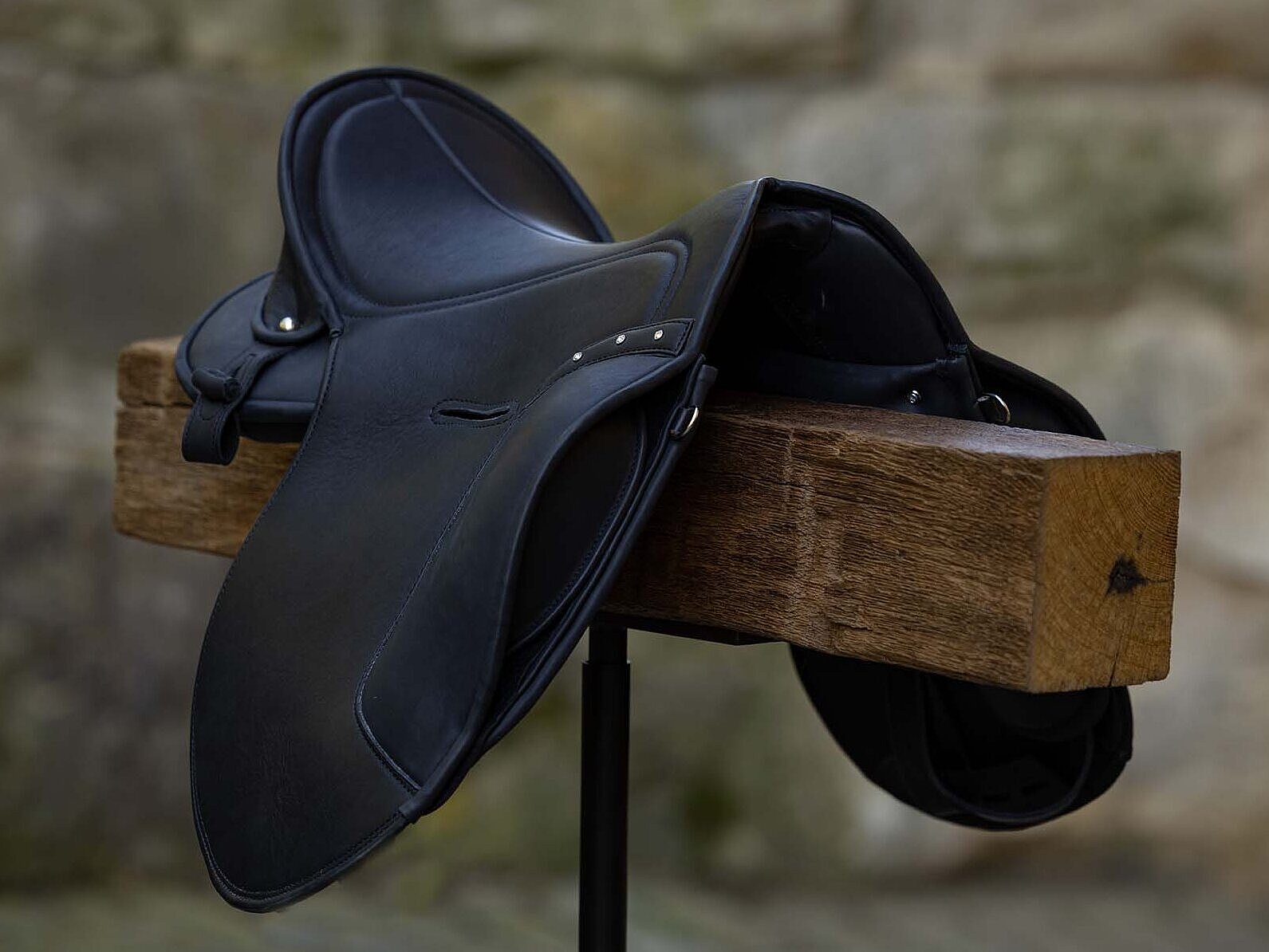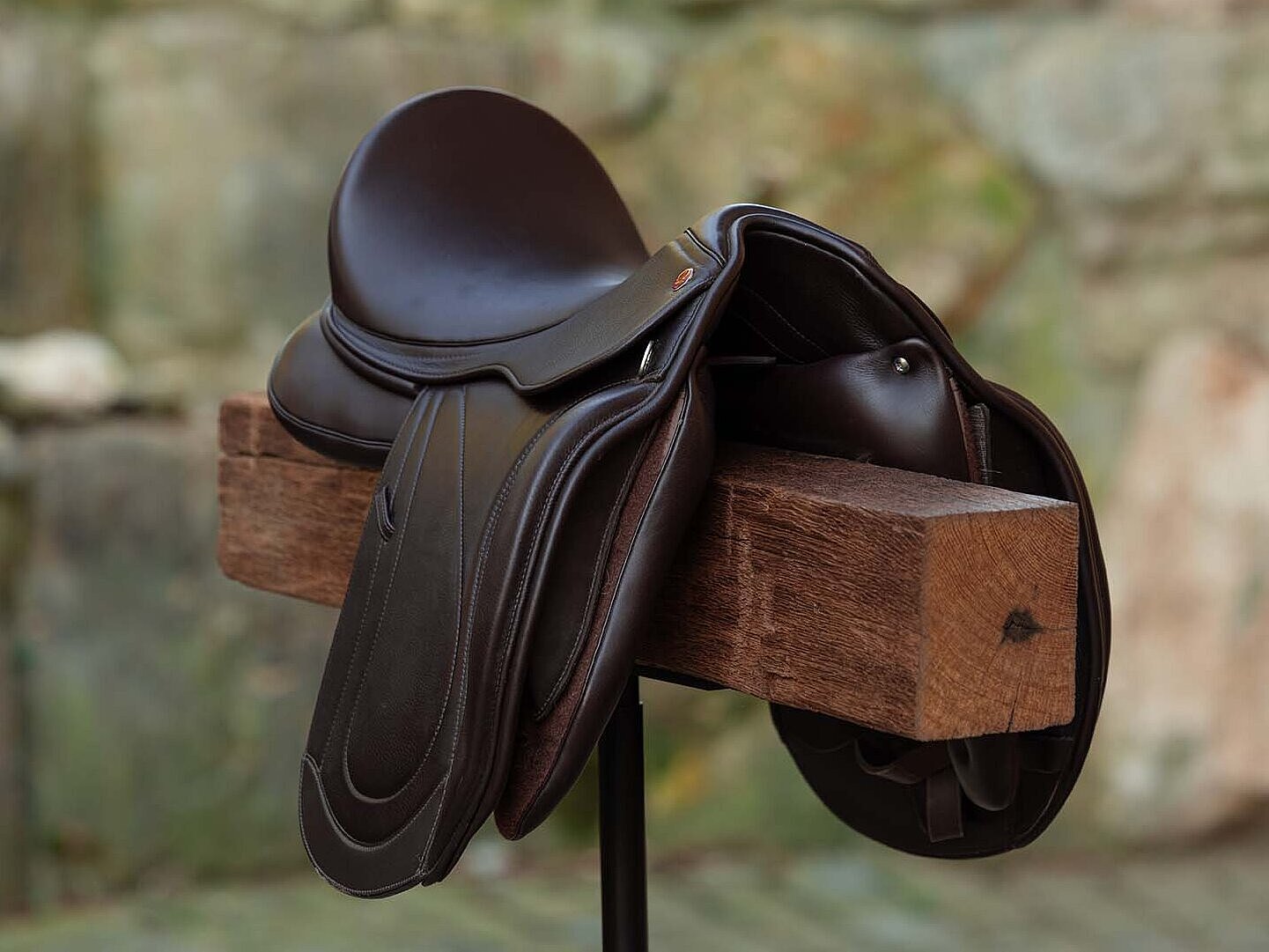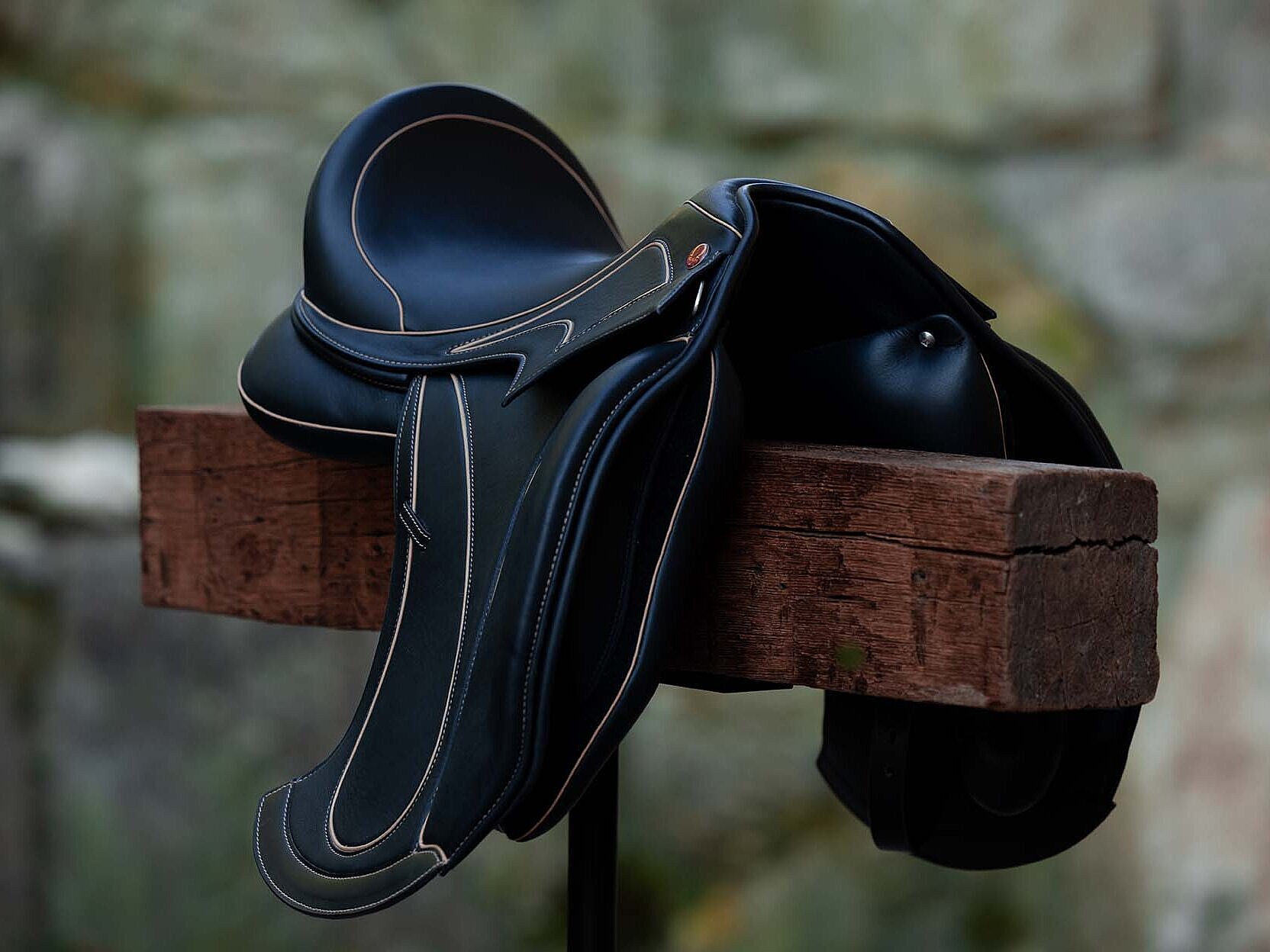What is a dressage saddle?
Over the course of time,various equestrian saddles have been developed to meet the requirements of individual disciplines. Dressage saddles are, as their name suggests, specially made for the requirements of dressage. The distinctive features are a deep seat, prominent knee rolls and an elongated, straight saddle flap. The popular and nowadays widely used classic dressage saddle impresses with its simple elegance in a sleek and elegant black look.
How does a dressage saddle differ from other saddles?
In comparison to a jumping saddle or eventing saddle, the dressage saddle has a deeper seat with a narrow seat waist, prominent knee rolls adapted to the elongated rider's leg and an elongated, straight saddle flap. Mono flap saddles are popular as they bring the rider's leg particularly close to the horse. In addition to the defined seat profile for a stretched and balanced seat for the rider, a key feature of many models is the small contact area.
This is created by the narrow saddle panels or the so-called French saddle panels. The rider's weight aids are transmitted directly and immediately to the horse via the narrow panels, enabling direct contact between horse and rider. The saddle enables the rider to pass on small and subtle differences in aids directly to the horse. The deep seat profile and the small contact surface enable a particularly close connection to the horse as an essential prerequisite for perfecting the most difficult lessons.
What makes a good dressage saddle?
A good saddle offers an even distribution of pressure on the horse's back and offers comprehensive customisation options for the horse. This includes a gullet plate that is positioned behind the shoulder to maximise shoulder freedom and freedom of movement for the horse.
The gullet plate should be replaceable or adjustable so that the width of the chamber can be adapted to the horse at any time. These factors are not only important for a young horse that is still growing and changing its conformation. Successful training, natural changes in the horse or even after breaks in training should also allow these dimensions to be adjusted at any time.
Customisation options
In order for the saddle to lie parallel to the back, the panels should also allow for changes. Regardless of whether the panels are filled with moulded panels or saddler's wool, it should be possible for the saddler you trust to change the shape and filling at any time. We recommend a regular fit check in order to avoid any defects in the fit such as bridging or so-called hollow saddles.
The saddle panels offer a shock-absorbing effect thanks to a soft padding material and should offer sufficient shoulder freedom in the front area. There should be at least a fist's width of space in the spinal canal to provide sufficient spinal clearance. It is just as important to have enough space above the withers - only then can the horse move comfortably under the saddle and perform at its best in the demanding dressage movements.
What makes a SIGNUM dressage saddle special?
At SIGNUM, we have not deviated from our philosophy of a large contact area for our dressage saddles either. With our custom-made saddles, the rider can combine the feel of a "real" dressage saddle with a narrow and deep seat, a block flap or variable Velcro flap with a large contact area that is gentle on the horse's back. A custom-made saddle for dressage, in which every detail from the saddle tree to the saddle design is manufactured according to the needs and wishes of horse and rider.
Our confection models also have extra large, wool-padded panels. In terms of appearance, however, they are even closer to the look of the "classic for dressage" for a simple and elegant appearance compared to our custom-made saddles.
Regardless of our different custom-made or confection saddle models, we stand for dressage saddles with more comfort for horse and rider.
Who is a dressage saddle suitable for?
The characteristics of a genuine dressage saddle with its defined seat profile and narrow contact area make these saddles real specialists. They were developed at a time when the sporty warmblood horse dominated this discipline and alternative horse types were still exotic. Assuming a good level of training and strong back muscles, a well-fitting dressage saddle is suitable for targeted dressage training. If you enjoy travelling off-road or want to do a few small jumps, models such as an eventing saddle or jumping saddle are suitable alternatives.
Due to their narrow contact surface and the associated more localised pressure distribution, they are not suitable for alternative uses such as longer rides or even trail rides. For horse types with a weak or particularly soft back, which is often the case with special breeds, alternatives with a larger contact surface and therefore pressure distribution that is gentler on the back should be considered.
Which dressage saddle is best for me?
First and foremost, the fit of a saddle for horse and rider is paramount. Whether warmblood or pony, beginner or professional rider - a suitable saddle is the basic prerequisite for motivation and enjoyment in dressage training.
As a rider, you should have the opportunity to try out different models and seat profiles during a saddle fitting. This not only allows you to find the right seat size in inches. Test whether a narrow or wide seat, a deep or flat seat, a soft or defined block seat and much more will give you the best seat feeling. The best dressage saddle for you as a rider gives you maximum contact with the horse and allows you to adopt a relaxed, upright and stretched riding position.
Which dressage saddle is the best for my horse?
If your horse has high withers, the saddle tree should be shaped accordingly, the gullet plate positioned sufficiently high and the panel height sufficiently thick. If your horse has a pronounced shoulder area, the saddle panels should be able to offer the shoulder sufficient shoulder freedom, even with sweeping and expressive movements.
If you have a young horse, look for a saddle with extensive adjustment options and, if necessary, switch to a used dressage saddle at the beginning. If you have a sensitive horse, we recommend a saddle with a correspondingly large contact surface. If you have a particularly sensitive horse, we can recommend a large contact surface with wide and soft panels in order to distribute the rider's weight as evenly as possible on the horse's back, even in dynamic moments.
Dressage saddle for short horses
Does your horse have a particularly short back and are you looking for a suitable dressage saddle for short backs? The risk of pressure points in the front and rear area of the panels is particularly high with dressage saddles with a small seat size in inches and a short contact area or French panels. Especially if the rider tries to cope with a saddle that is too small, as the horse's optimum saddle position seems to dictate this. In the worst case scenario, if the saddle is too small and short, you risk not only muscular tension in the long term, but also muscle atrophy and, in the worst case, pain in your horse's saddle position.
Our experience has shown many times over that in practice, the saddle area that makes sense for a horse and rider pair and is gentle on the back can only be determined by taking into account the required seat size of the rider.
Which accessories go with a dressage saddle?
In most cases, the right girth for a dressage saddle is a short girth. The girth straps of a dressage saddle with a single flap run underneath the flap. We recommend an anatomically shaped short girth so that your horse has the greatest possible freedom of movement. Girths for dressage saddles are available in a wide variety of types, shapes and materials: from short girths with lambskin, to anatomically shaped girths made of leather, to girths made of neoprene, corded girths or even special shapes such as a so-called moon girth.
Ask your saddler for advice on which shape you should choose for your horse's belly or girth position. Girths with lambskin are particularly popular with sensitive horses. Alternatively, cord girths and anatomical leather girths have proven to be a good choice for sensitive horses, where chafing can easily occur in the girth area. Your horse has the last word - your horse's individual reactions will show you which girth it finds most comfortable.
Stirrup leathers of a suitable length for the rider's leg and riding boots are used on a dressage saddle. There are stirrup leathers where the buckle sits at the top of the stirrup bar and several straps run on top of each other and there are mono stirrup leathers, which consist of a single leather strap that is fastened over the length of the stirrup. The advantage of mono stirrup leathers is that they are not unnecessarily bulky and the rider's leg is close to the horse.
When choosing the right accessories, a suitable saddle pad is a must. You can choose from a variety of saddle pads made from countless materials such as quilted fabric, velvet, satin or corduroy in an infinite number of colours. From a saddle pad with lambskin to a saddle pad with additional padding to a plain, white competition saddle pad.
What to look out for when buying?
What should you look out for when buying a dressage saddle? Regardless of the desired brand and whether you are looking for a new or used saddle, we recommend that you pay attention to the following points when buying a saddle:
- The dressage saddle offers extensive customisation options for the horse
- The gullet width can be changed using an adjustable or replaceable gullet plate
- The panels offer the widest and softest possible contact surface for the horse
- The leather and workmanship of the saddle are of high quality, whether new or used
- Send to a mobile saddle service that comes to you and your horse in the stable
- Try out different new or used saddles on your horse
- Choose a saddler who also offers a full saddle service after the sale, e.g. for padding the panels and fitting the saddle using a mobile saddle fitting service
